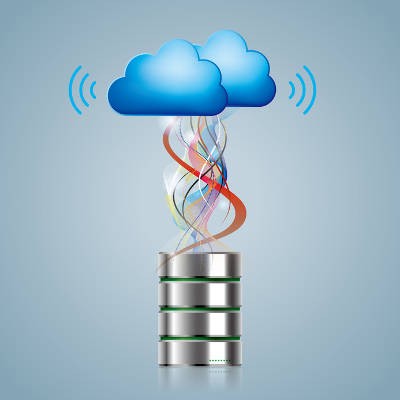Even if we’d like it to last forever, business technology can’t possibly do so for a number of reasons. Due to the fact that businesses and their technology are constantly upgrading and changing, it’s almost a certainty that you’ll have to upgrade your technology at some point, whether it reaches its end-of-life event or just simply becomes obsolete for your organization. In fact, failing to update your infrastructure from time to time can have serious negative side-effects for your business.
Telesys Voice and Data Blog
The modern office is filled with distractions, and that’s to say nothing about the everyday user’s life. With so many devices and notifications interrupting focus for users all over the world, it’s more important than ever before to have a strategy for how to deal with these issues and become as productive as possible in the workplace. Today, we’ll be discussing some of the biggest distractions in the workplace and how your employees can overcome them.
There is a lot on the line for any business when disaster strikes. Is your business ready for a data loss incident? Every year people from all over the world make resolutions as the new year commences; and, this year will be no different. For the business owner hoping to mitigate their exposure to downtime and client backlash in the face of an event like this, having a plan in place is essential to seeing a positive resolution to a bad situation. We’ll go through what constitutes a good backup solution, and what goals you need to prioritize to get your business in a position to succeed if it is put in a tight spot.
When people find new reasons to collaborate, it typically results in something positive. There is some new software that is now making collaboration easier, while still providing people the tools they need to stay productive. These collaboration tools are changing the face of business. Today, we take a look at them and how your organization can use these new collaboration tools to move business ahead faster.
For those who don’t know, the term information technology is an encompassment of the technology used in the facilitation of rendering, sharing, and storing data. Any piece of technology that is used to process, keep, send, and secure digital information, is considered IT. Today, we will look at some of the emerging technologies presenting solutions for businesses and individuals, alike, heading into 2019.
You might hear the term “zero-day” when discussing security threats, but do you know what they actually are? A zero-day threat is arguably one of the most devastating and dangerous security issues your business could face, and if you’re not prepared, they could be the end of it.
These days, many businesses turn to hosted solutions to take advantage of services that they haven’t been able to use in the past. Whether it’s because they don’t have the staff to properly look after the services or they don’t have the in-house infrastructure for it, organizations continue to take advantage of hosted solutions to varying degrees. We’ll walk you through your options for whether you should build, rent, or buy your hosted solutions to best fit your business’ needs.
More small businesses today depend on their IT. If that technology isn’t working as intended, it can really stymie an organization’s ability to be effective. Our strategy of managed IT support and services can do quite a bit towards keeping a business running efficiently. Today, we’ll take a look at managed IT to see how proactive monitoring can deliver enhanced efficiency to businesses.
Any project manager will tell you that there are countless issues that can get in the way of a successful implementation. To nobody’s surprise, business technology can aid project management by streamlining operations and making the entire process much easier for everyone involved. We’ll dig into the details about how project management software and value-based managed IT services can help you complete projects on-time and on-budget.
The cloud helps many organizations expand their territories beyond simply the physical workplace. Employees can now access data and applications on any connected device. Your office can benefit considerably from cloud-based resources, with email in particular being a standout solution for the cloud.
Many small and midsize companies are forced into spreading their resources out in order to compete with larger organizations. For those that are searching for a way to manage all the moving parts of business, having the means to communicate has to be at the top of the list. What makes it more difficult are that many organizations have a reliance on workers that work remotely. For times like this, a comprehensive conferencing strategy is important. We’ll take a look at what makes up today’s powerful conferencing solutions, and how you can use them to find more success.
Information technology has always been a hotbed for future predictions. Whether it was Marconi’s grand plans for wireless communications or the bold prediction that every person would be carrying around a computer that fits in the palm of their hand, the future always looks bright when new technologies are considered. But, what does the immediate future of information technology hold?
Understanding what your customers need is a crucial first step toward improving the way your organization communicates with them. They expect a certain level of service, so how can you make sure to maintain it while still leveling with them on what they require of your business? A customer relationship management software, or CRM, is invaluable toward this end.
The Internet is home to a vast amount of knowledge. Undoubtedly you’ll find yourself revisiting certain sites more often than others to take advantage of the information contained within. Thankfully, the bookmark system is a great way to make this happen, giving users an easy and efficient way to navigate back to frequently-visited websites.
Managed IT services can present a lot of benefits for small businesses. Since not many smaller businesses can afford to staff expert IT technicians, managed IT services are an attractive alternative that allows an organization to get the IT support and management they need to keep their business running efficiently. Today, we’ll go over all the benefits a managed service provider can present a small business,and just how a MSP delivers significant returns on your IT support investments.
Disasters are a very real possibility that businesses have to deal with, but not all disasters come in the form of a flood or fire. You can predict weather effects that can create problems for your business, like thunderstorms and ice storms that bring down power lines, but you can’t possibly predict when and how your organization will suffer from a data loss incident. We’ll discuss in-depth how your business can save itself the trouble of dealing with cyberattacks and user error--particularly in regard to data backup and disaster recovery.
Each year there are changes that need to be made in the way that organizations manage their IT security. In 2017, ransomware burst on the scene in full force, and cyber security strategies reacted, coming up with fully managed security platform that remediate issues better, and cost organizations far more than they would have spent on IT security just a short time ago. In 2018, the same problems persist, while other developing technologies threaten the natural order of things. Today, we will look at how cybersecurity is being approached in 2018.
Spam is a major hindrance when running a business that relies on email, but it’s easy to protect your employee’s time from the average spam messages with the right technological support. Unfortunately, hackers have adapted to this change and made it more difficult to identify scam emails. More specifically, they have turned to customizing their spam messages to hit specific individuals within organizations.
The business landscape can be unforgiving. It can be filled with landmines that slow progress to a crawl and blitzes that send your head spinning. If you were to compare the business world to history's great battles, technology solutions are a business’ weapons. They are the tools used to make the everyday grind possible. The more advanced an army’s technology, the bigger the edge they have over outfits that don’t have that technology...as long as it works as intended.
The medical field has spawned all kinds of new technology that takes patient care to the next level. Regulations demand that even smaller practices need to make the jump to electronic medical record systems (also known as electronic health records). These EMR/EHR solutions provide an interface that give providers and patients a way to keep themselves connected to each other--a tool to promote a more efficient delivery method for these services. We’ll take a look at these EMR and EHR solutions that are hosted in the cloud, giving your organization more information to make an educated choice on implementing this software.
Mobile? Grab this Article!
Tag Cloud




















